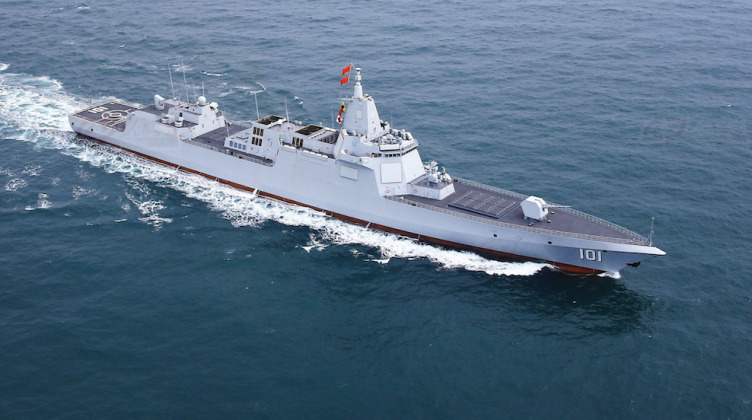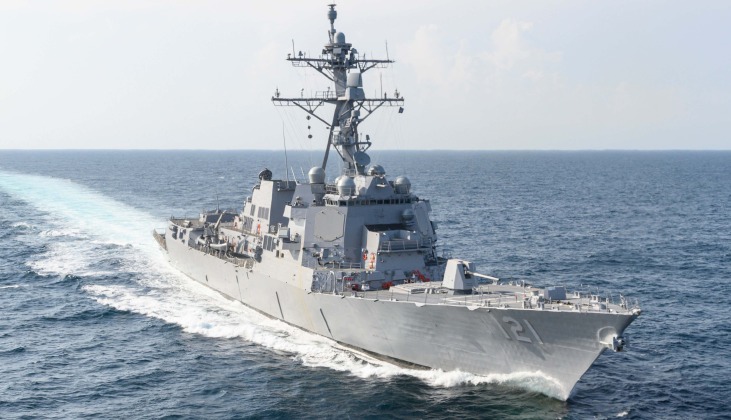The Chinese People’s Liberation Army has reportedly expanded testing and evaluation of its weapons systems to simulate a total war waged on a global scale, with the recent computer-based wargames other tests assessing warships’ capabilities in such conflicts. PLA researcher Fang Canxin referred to a ‘Z-war’ scenario, classifying that as “a clash of strategic willpower. [when] the regional conflict escalates to a total war.” A peer-reviewed article published in the Chinese Journal of Ship Research by Fang’s team saw a Chinese destroyer attacked by over a dozen missiles and three torpedoes, and its sensors and communications jammed, reducing its radar range by 60 percent. Facing an unnamed ‘Blue Alliance,’ the destroyer lost a third of its air defence potential and achieved an approximately 50 percent hit rate with its surface to air missiles.
Chinese naval experts independently assessed the results of their test to be “realistic.” This comes as China’s navy has revolutionised its capabilities over the past decade to field a fleet considered qualitatively fully on par with that of the United States in particular in terms of the performances of its surface ships.
U.S. Navy Arleigh Burke Class Destroyer
With a ‘Blue Alliance’ potentially alluding to Western countries’ frequent designation of themselves as ‘blue’ and adversaries as ‘red’ for exercises, the simulated adversaries although not named specifically were in the simulation deploying Arleigh Burke Class destroyers – which are fielded exclusively by the U.S. Navy. Destroyers using the same AEGIS combat system as the Burke, but combining it with indigenous technologies, are also fielded by Japan and South Korea which are considered to have the most capable surface combat ships among American allies, with the former having the third largest destroyer fleet in the world.
China began to field destroyers with a capabilities similar to the AEGIS ships in the 2010s with the Type 052D and Type 055 classes, the latter which is widely considered the most capable surface combatant in the world. Tensions between Beijing and Washington remain high, and despite U.S. Secretary of State Antony Blinken making a long-delayed trip to Beijing in mid-June, President Joe Biden’s labelling of his Chinese counterpart Xi Jinping as a “dictator” just a day after Blinken’s return, and America’s imposition of sanctions on PLA officials preventing a restoration of military-military dialogue, have ensured that relations remain poor. The Taiwan Strait and the Korean Peninsula which have been technically in states of war since the 1940s and 1950s, and the disputed South and East China Seas, are considered leading potential hotspots where tensions could flare into open conflict.


